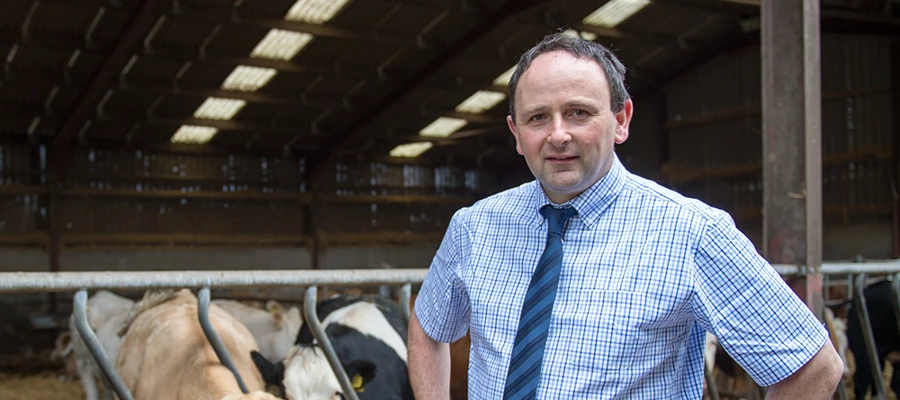Actisaf® and Safmannan® support production of fantastic home-grown beef
The McKee family has been farming at Strangford View Farm in the Craigantlet Hills outside Newtownards, Northern Ireland since 1922.


Nowadays, the farm is run by husband and wife Colin and Linda McKee, who farm around 350 acres producing home-grown beef, lamb, chicken and eggs for sale through their on-site country store and restaurant. And they must be doing something right, as people come from far and wide to buy produce in their farm shop, with the restaurant serving around 500 people every day, six days a week!
To cater for this demand for high quality meat, Colin now finishes around 600 mainly continental cattle a year, which are all butchered and sold through the farm shop and restaurant.
“You just can’t beat home-grown food, and the flavour and texture makes all the hard work worthwhile,” explains Colin. “We know that our customers care about the origin of their food, and know that home-grown is best.”
Cattle are bought in as stores at around 480kg and Colin prefers Charolais heifers, although he has a mix of different continental and native bred cattle on the farm at any one time. Cattle are batched as they come on to the farm and are fed on home-grown barley, high quality grass silage and a home mix that incorporates maize, distillers, bread and straw.
“We aim to put on around 120kg in about 70-80 days to finish the cattle at about 600kg live weight, which should give a carcass of around 340kg,” Colin said. “We take three cuts of leafy, young grass silage each year, which has high dry matter and high protein, and when this is fed with our home-grown barley it really is rocket fuel for the cattle.”
Given the high quality of feeds used, it is important to Colin that rumen health is maintained to provide an easy and quick transition on to the finishing diet when cattle arrive on the farm and consistent performance throughout the finishing period.
“We add both Actisaf live yeast and Safmannan yeast cell wall to our home-mixed ration to protect rumen function,” Colin explained. “Since we’ve been using these feed ingredients we find that cattle get going quicker when they arrive on the farm, are more content, dung consistency has improved considerably and we get a faster finish – we’ve definitely noticed a difference.
“It is really important that we get cattle finished when we expect them to be, as we need a steady flow of 10-12 beasts a week to slaughter to meet the demand from the shop and restaurant. Actisaf and Safmannan help ensure that we don’t get any upsets through the finishing period and so I wouldn’t want to be without them now."
Calves are also brought on to the farm at around 10 days old and are fed milk through an automatic feeder.
“Buying in calves at that young age is always a potential risk as you don’t know how they’ve been managed before they come to you,” said Colin. “We used to see a few health problems in calves and we were recommended Actisaf and Safmannan for them to support high levels of feed intake and rapid growth rates, as well as support the immune system in the young calf.”
Colin adds the Actisaf and Safmannan, which comes in powder form, to the milk powder in the automatic feeders.
“We want calves to settle quickly and grow fast from an early stage,” Colin explained. “Ideally, we would like to double birth weight by the time of weaning at around 8 weeks. We’ve certainly noticed a difference since we’ve been including the Actisaf and Safmannan in the milk – calves settle better, feed intakes are improved and calves therefore grow well, resulting in bigger calves at weaning.”
Once weaned, calves are fed a home-mixed meal along with home-grown high-quality grass silage and straw. Colin continues to include Actisaf and Safmannan in the ration throughout the calves’ lives.
“We’ve seen great results from including these feed additives,” Colin concluded. “Calves grow well, dung consistency is better, cattle seem more content, and they seem to finish faster too. I wouldn’t be without it.”
